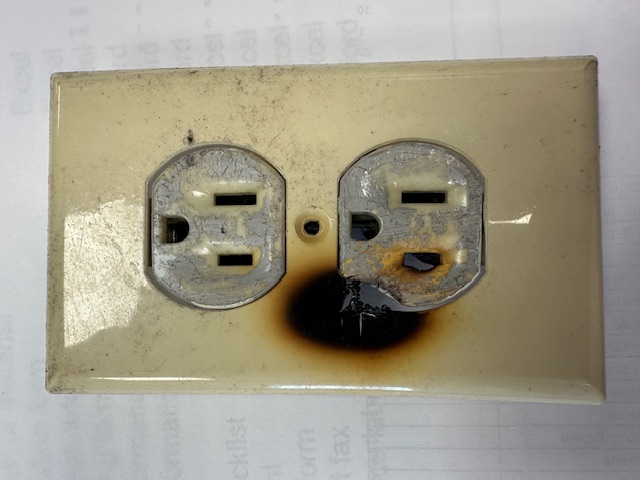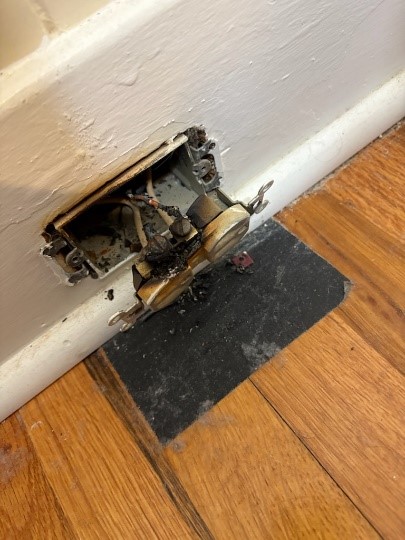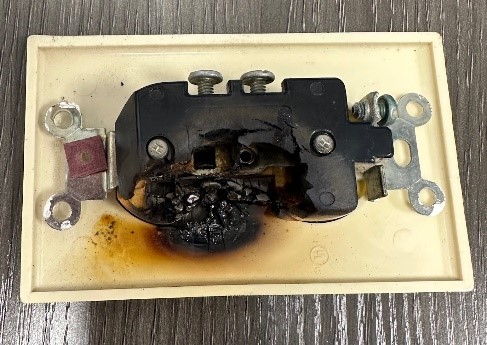This could have been a disaster of a house fire
Nearly a house fire


Nearly a House Fire!
On January 6, 2025, we went to a home on 10th street in Idaho Falls Idaho. The homeowner had a room with no power. After checking the panel, wiring, and outlets, we discovered an outlet that a fire hazard (see Picture). The customer didn’t know the outlet was there, because it was behind a wooden dresser. The customer asked if this was the type of thing that causes house fires. It absolutely is.
The cause of the burnt outlet and wiring is a series arc fault. The wire connected to the screw was loose, or the wall outlet had an internal loose connection causing electricity to arc across connections. This arcing causes significant heat. The wire in the picture is rated for 194°F, so the temperature had to exceed well over 200°F when a load was applied.
Arc fault Circuit Interrupter (AFCI) circuit breakers can detect series or parallel arcs. They have additional electronics in the breaker than can sense the difference between a normal arc, like a light switch turning on, and a dangerous arc like a loose switch.
Normal circuit breakers only detect too much power being used. Series arcs rarely pull enough power to trip a breaker. You could have a fastener staple in the wall that is too tight causing arcing as we speak, and no way to know if your house is going to catch fire.
In our line of work we see a lot of “near misses” when it comes to electrical fires. The Arc Fault Circuit Breaker, sometimes known as “Fireguard Breakers” is the best fire prevention device in the home today.
I recommend every home getting this up dated device. Idaho has limited the requirement of Arc Fault Breakers to only bedrooms, but I like my entire home.
Call us today 208.522.7777 we will be glad to help you with “Fireguard Breakers” in your home.

A report from the Underwriters Laboratories in the 1990s identified a problem with branch circuit wiring that was causing residential fires.
The problem was things like series arcing like a loose connection, or parallel arcing like a damaged cord or a screw in the wall that hit a wire was causing fires.
From 1993-1996 the National Electrical code making panel began to address the problem of electrically caused fires.
In 1998 the National Electrical Manufacturers Association begin working with manufacturers to develop a standard for Arc Fault Circuit Interrupters.
In 2002 Arc Fault Circuit Interrupters (AFCI) became mandatory for bedroom circuits in the National Electrical Code.
In 2014 Arc Fault Circuit Interrupter became mandatory for most of the home.

